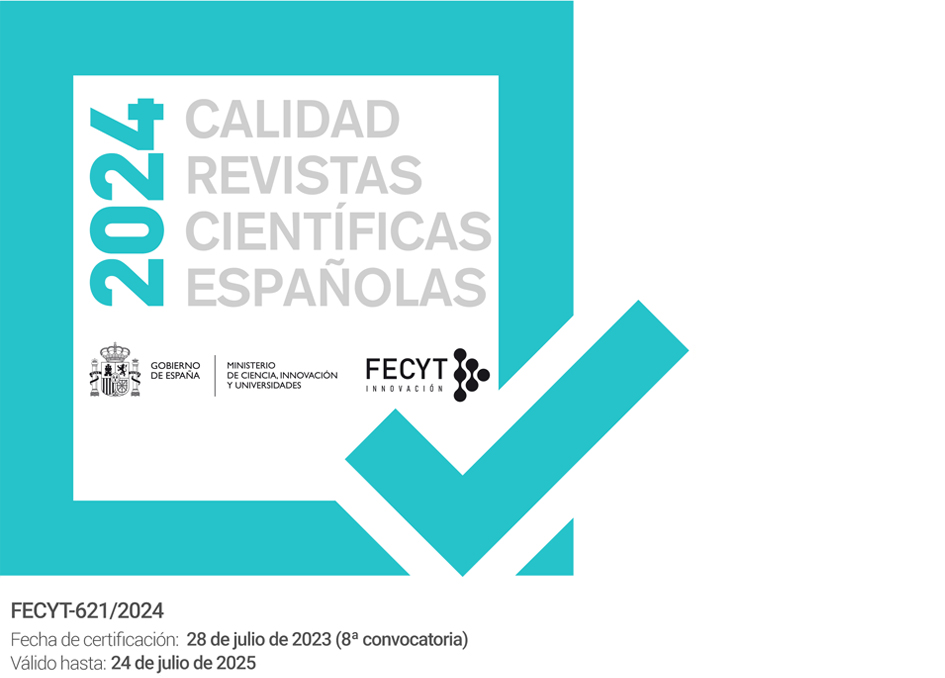SELECCIÓN DE SEXO EN FASE EMBRIONARIA: UNA VISIÓN DESDE LA CIENCIA, LA ÉTICA Y EL DERECHO.
Resumen
La opción de elegir el sexo de la descendencia es un deseo mostrado desde la antigüedad por múltiples culturas. Los métodos propuestos han sido diversos, todos ellos discutibles ya que carecían de evidencia científica o suponían el aborto y un infanticidio, método que todavía se sigue realizando en algunas regiones del planeta. Todas las propuestas estaban vinculadas a obtener un hijo varón. La novedad que aportan las técnicas de reproducción humana asistida (TRHA) y sus complementarias como el diagnóstico genético preimplantacional (DGP) es la posibilidad de seleccionar el sexo en fase embrionaria. Aunque la normativa en el ámbito europeo lo prohíbe por razones no médicas, esto es un hecho que se practica en muchos países. A nivel ético, el sufrimiento de los progenitores es menor en comparación con las prácticas comentadas, pero es ampliamente discutido si es moralmente aceptable la selección de sexo mediante DGP y qué motivos podrían aceptarse.
Descargas
Citas
-ALLYSE, M., «Non-invasive prenatal testing: a review of international implementation and challenges», International Journal Women’s Health, 2015 vol. 7, pp 113–126.
- BARUCH, S., KAUFMAN, D., «Genetic testing of embryos: practices and perspectives of US in vitro fertilization clinics», Fertility and Sterility, 2008, vol.89, n.º5, pp 1053-1058.
- BERNA, A., «Prenatal Diagnosis and Ethics: A Turkish Evaluation», Human Reproduction & Genetic Ethics, 2000, vol.6, n.º2,pp 27-31.
-DAHL, E.,«Preconception sex selection for non‐medical reasons:a representative survey from Germany», Human Reproduction, 2003, vol. 18, n.º 10, pp 2231-2234.
-DAHL, E., «Procreative liberty: the case for preconception sex selection», Reproductive BioMedicine Online, 2003, vol. 7, n.º10, pp 380-384.
-DONDORP, W. et al., «ESHRE Task Force on ethics and Law 20: sex selection for non-medical reasons», Human Reproduction, 2013, vol. 28, n.º 6, pp 1448 - 1454.
-DE WERT, G., DONDORP, W., «Preconception sex selection for non-medical and intermediate reasons: ethical reflections», Facts, views & visions in ObGyn, 2010, vol. 2, n.º 4, pp 267–277.
-EGOZCUE, J., «Preimplantation Social Sexing: A Problem of Proportionality and Decision Making», Journal of Assisted Reproduction and Genetics, 2002, vol. 19, n.º 9, p 441.
-GEORGE, M.G., «Millions of missing girls: from fetal sexing to high technology sex selection in India», Prenatal Diagnosis, 2006, vol.26, n.º7 ,pp 604-609.
-HANSOTIA, M.D., «Family balancing by preimplantation genetic diagnosis in India», Human Reproduction, 2014, vol. 17 ,n.º10, pp 2778-2779.
-International Bioethics Committee, UNESCO. Report of the IBC on Pre-implantation Genetic Diagnosis and Germ-line Intervention, Paris, 24 April 2003.
-IZTKOVICH,J.S.,Israel allows sex selection of embryos for non-medical reasons. BMJ ,2005, vol. 330, n.º 7502, p 1228.
-JUNHONG, C., «Prenatal sex determination and sex-selective abortion in rural central China», Population and Development Review, 2001, vol.27, pp 259–281.
-KANE, P., CHOI, C.Y., «China’s one child family policy», BMJ. 1999, vol. 319, n.º 7215, pp 992–994.
- KANT, I., Fundamentación para una metafísica de las costumbres. 2ªed., Alianza Editorial, Madrid, 2012.
-LIU, P., ROSE, G. A., «Social aspects of > 800 couples coming forward for gender selection of their children», Human Reproduction, 1995, vol. 10, n.º4, pp 968–971.
-Observatorio de Bioética y Derecho. Documento sobre selección de sexo, Barcelona, febrero de 2003.
-MALPANI, A., «Preimplantation sex selection for family balancing in India», Human Reproduction, 2002, vol. 17, n.º 1, pp 11-12.
- Organización de las Naciones Unidas (ONU). The World’s Women 2015. Trends and Statstics.
- OSUNA CARRILLO DE ALBORNOZ, E. y ANDREU MARTÍNEZ, M.B., «Artículo 12. Diagnóstico Preimplantacional», en Cobacho Gómez, J.A. (dir.): Comentarios a la Ley 14/2006, de 26 de mayo, sobre Técnicas de Reproducción Humana Asistida, Thomson-Aranzadi, Navarra, 2007, pp 435-461.
-PÉREZ ALONSO, E.J., «Consideraciones críticas sobre la regulación legal de la selección de sexo (parte II)», Revista de Derecho y Genoma Humano, 2002, vol.17, pp 99-124.
-PESSACH, N.,et al.,«The Israeli National Committee for sex selection by pre-implantation genetic diagnosis: a novel approach (2005–2011)», Israel Journal of Health Policy Research, 2014, n.º 3, p 33.
-PUIGPELAT MARTÍ, F., en «La selección de sexo: aspectos jurídicos y valoración crítica», Revista de Derecho y Genoma Humano,1997, vol. 6, pp 93-109.
-ROBERTSON, J.A., «Extending preimplantation genetic diagnosis: the ethical debate Ethical issues in new uses of preimplantation genetic diagnosis», Human Reproduction,,cit., p 465-471.
-SEROUR,G., «Religious perspectives of ethical issues in ART», Middle East Fertility Society Journal, 2005, vol. 10, n.º 3, pp 185-190.
-TEN, C.L.,«The use of reproductive technologies in selecting the sexual orientation, the race and the sex of children», Bioethics, 1998, vol. 12, n.º 1, pp 45-49.
-VOGEL, L., «Sex selection migrates to Canada», CMAJ, 2012, vol.184, n.º 3, pp 163-164.
Descargas
Publicado
Cómo citar
Número
Sección
Licencia
Aquellos autores/as que tengan publicaciones con esta revista, aceptan los términos siguientes:- Los autores/as conservarán sus derechos de autor y garantizarán a la revista el derecho de primera publicación de su obra, el cuál estará simultáneamente sujeto a la Licencia de reconocimiento de Creative Commons que permite a terceros compartir la obra siempre que se indique su autor y su primera publicación esta revista.
- Los autores/as podrán adoptar otros acuerdos de licencia no exclusiva de distribución de la versión de la obra publicada (p. ej.: depositarla en un archivo telemático institucional o publicarla en un volumen monográfico) siempre que se indique la publicación inicial en esta revista.
- Se permite y recomienda a los autores/as difundir su obra a través de Internet (p. ej.: en archivos telemáticos institucionales o en su página web) antes y durante el proceso de envío, lo cual puede producir intercambios interesantes y aumentar las citas de la obra publicada. (Véase El efecto del acceso abierto).



